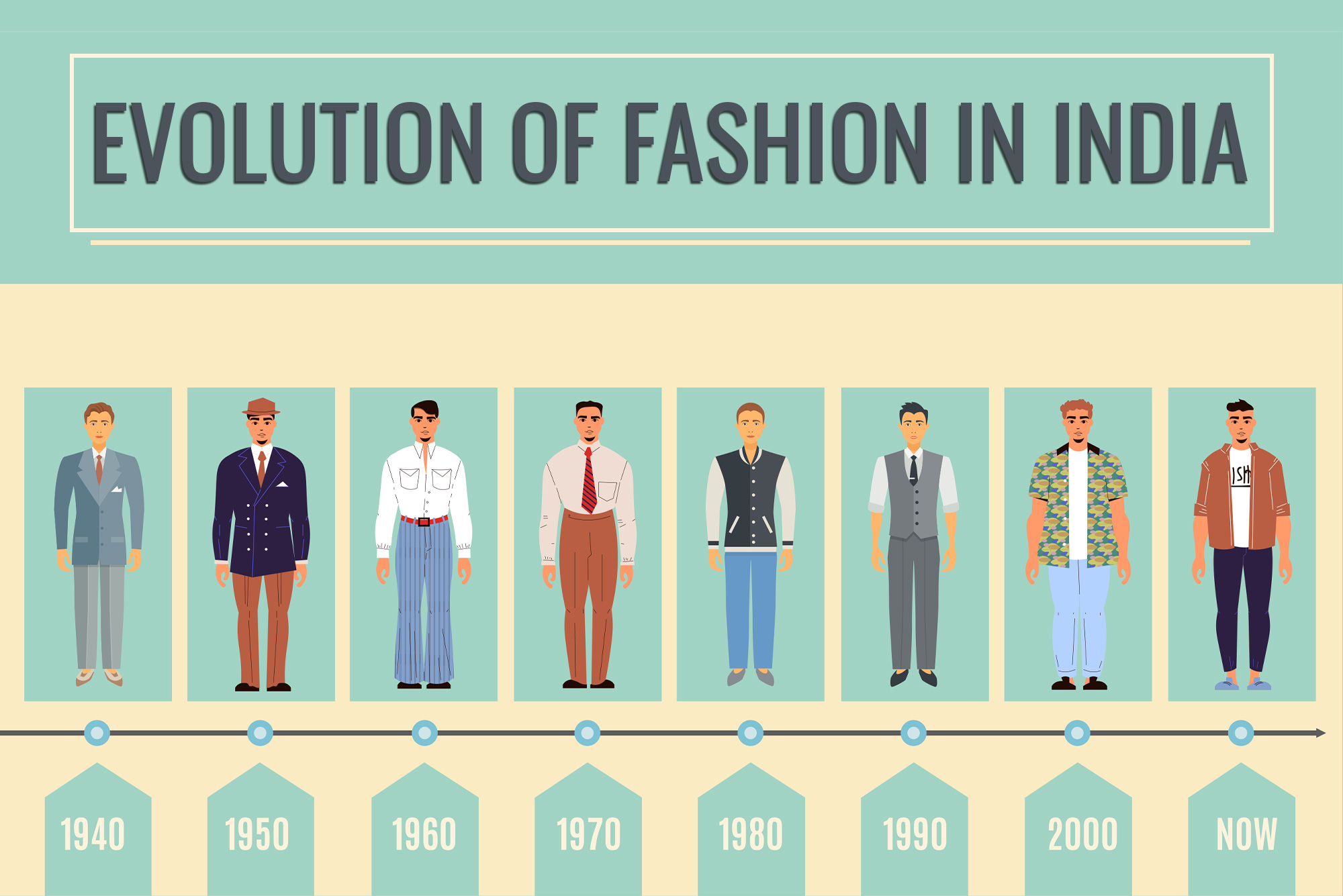
Evolution Of Fashion In India: Turning Pages Of History
Fashion in India has a huge history and has evolved over the centuries. From ancient civilization to modern times, India has seen various fashion trends followed and loved by other countries as well. For today’s modern fashion, you can shop with the latest Myntra Coupons through Cashaly.
Humans, when civilization started, had no idea about fashion, clothes, accessories, or any kind of apparel. With time, humans started creating different things for their livelihood and started to cover their bodies with plant leaves and build ornaments with stones and beads. All of this can be found in the cravings all over India, telling us how ancient civilizations lived.
It can be seen from an early age that people used a thin cotton or silk cloth to cover specific areas of their bodies. In those times, they just used to wrap their bodies without following a specific fashion. You can find many sculptures of dancers with loads of ornaments but not a single cloth covering their bodies.
However, with the evolution of the human race, clothes slowly came into play, and as the era changed, the style and the way people wore clothes also changed. New tools and machines were invented to weave thread into a piece of cloth. Now, we call those machines the traditional way to create clothes, as today’s advanced machines do the work automatically.
Keep reading the blog to learn more about the evolution of fashion in India.
History and Evolution of Indian Fashion
Let us go through the deep history of Indian fashion and its evolution over the centuries.
Vedic Era
In the Vedic period, fashion was just limited to wrapping a single cloth around the body that was unstitched. Antariya was one of the common garments that people used to drape in various ways. It was similar to a loincloth that people usually wrap around their waist with pleats in front, take between the legs, and tuck in behind, which is also known as Kachha style.
Antariya was found to vary in length, such as from thigh length to ankle length. Similarly, the fabric also varied from thin to thick depending on the person wearing it. Uttariya is another piece of clothing that was worn according to individual preference and weather. The way people usually wore it was in two ways: either across the chest or over the shoulders, supported by the wrists.
Another important piece of clothing or accessory was the Kayabandh, which we recognize as a belt in today’s era. It was discovered and used to hold the Antariya properly so that the person could move around and work freely. It was tied below the navel, emphasising the curves.
This is an important thing to note: back then, people used to follow unisex fashion, which is also embedded in old Indian scriptures and texts. At that time, people didn’t start stitching clothes; however, they still learned to colour and embellish clothes with gold and silver threads.
The Age of Dynasties
As the Vedic era grew, people adapted different styles of clothing. And so the kingdoms started to establish themselves, and the concept of trade came into the picture. The early Vedic period was adopted from the largest empire that was founded by Chandragupta Maurya and the Sunga dynasty. Some married women had to cover their breasts with a breast band.
Many of you must be waiting to know when the saree came into existence, but its exact origins are still the subject of debate. Draping long-length clothes around the body was similar to a saree drape; however, the concept of a saree also changed over the years.
The Greeks and Romans brought tunics and different ways of draping, respectively, to India. Ancient Roman females used to wear a long tunic with a pullover made of wool that looked like an Indian saree. It is also believed that sarees came into existence after people started to stitch and sew clothes.
Under the rule of Kushan rulers, the change happened when people made the switch from draping clothes to properly cutting and sewing them into new garments. Even after the introduction of long tunics, coats, and trousers, Antariya and Uttariya were still worn by native people.
Coming to the Gupta period, stitched garments gained popularity and royalty. The tunic was later revamped with sleeves for the courtiers and ministers. You can also find well-dressed nobles in long coats, trousers, and boots on ancient coins.
Later, Antariya was styled differently for common men and royals. Common men used to wear thigh-length or short-length Antariya whereas royals and kings wore the long ones made of silk with patterns. And similarly, women used to wear Antariya in Kaccha style or like a skirt (calf-length).
Later evolving to backless cholis, ghagra skirts, Antariya in saree style, and many other fashion trends were seen in the Gupta era. In those times, showing skin was not at all a big deal for women and was not considered a disgrace. It was normal for everyone to wear such clothes and accept each other as they were.
Royal Era
We have seen the finest clothing in the royal era, showing the rich culture of India and also accepting other cultures that came to India. By this time, India was flourishing with garments that included dyes, prints, patterns, and embroidered cottons, muslins, and wools like fur, tassar, eri silk, and muga silk.
It is always said that history repeats itself, and this can be seen in today’s fashion era as well. Various designs like checks, stripes, floral, and animal motifs are all inspired by the post-vedic era.
It was now that India’s finest quality in clothing, designs, and styles gained foreigners attention. Since then, trading flourished and also changed many things, including the way people used to look at clothes. Gender-specific garments were now growing along with royalty-specific garments too.
Durbar dress, Bandh Gala, Achkans or Sherwani, Turbans, pure silk sarees or lehenga cholis, Shararas, and Ghararas are a few examples of types of garments that were introduced and worn in this period.
Also, jewellery and accessories were a source of beauty that both men and women used to wear. Women used to wear necklaces, earrings, anklets, armlets, rings, bangles, and maang tikas, adding to their beauty.
Colonial Period and Post Independence
More and more foreign countries were attracted to Indian textiles, designs, and prints. The British started to export Indian textiles along with other treasures, for which India was known to be the richest country in the world.
As soon as the East India Company took over India, commoners were looked down upon for their customs and costumes. They were treated as illiterate, which turned into poverty, slavery, and racism. Some came to an agreement and honoured the fashion that they were forced to adopt.
Ghagras and sarees, embroidered gowns, and frilled skirts were seen to be worn by women. Also, chiffon, lace, and satin were some novel fabrics used to make these clothes in various styles. With great popularity, men were also seen wearing shirts and pants. However, a huge population of commoners kept the roots intact and didn’t adopt any new fashion. They wore sustainable and their own creations of garments.
The Khadi movement, which was also a symbol of patriotism, started with the vision to eliminate foreign garments and their styles. Charkha was the premium source to create sarees, kurtas, pyjamas, suits, and various other garments.
Post-Independence changed the fashion reforms in India, and Khadi also played an integral part in producing ethnic wear. Later, clothes like skin-tight short kurtas, sleeveless tops, short and fitted blouses, bell bottoms, chequered shirts, and polo necks became prominent in the fashion trend. Not limited to garments, the fashion was also upgraded for the hair and accessories. While hitting the 70s, skirts, polka-dot dresses, maxis, crop tops, shirts, pant-suits, and fishnet stockings paired with boots were added to the fashion industry.
In the 1980s, when disco culture was making everyone crazy, commoners were also adapting to the style. Denim, leather jackets, colourful tees, and big shades were the most popular apparel items loved by people.
In the 1990s, jeans, tees, halter tops, dungarees, trousers, huge belts, and sunglasses were adopted as daily wear. And now sarees and salwars can only be worn and seen in ceremonies. As trade expanded, international brands came to India for business and were accepted happily by the people.
The brand’s era started in the 2000s, when Nike, Puma, Pepe Jeans, and more such brands offered a variety of fashionable clothes and apparel collections. Later, Indian designers like Tarun Tahiliani, Manish Malhotra, Sabyasachi, Neeta Lulla, and others took the limelight and provided India with authentic designs in apparel to create a new fashion trend.
Conclusion
In this blog, we have discussed the evolution of fashion in India by going through its deep history. India has seen change since the Indus civilization started, as other countries were attracted to India and wanted to take a look at the heritage that we carry. However, it didn’t stop at only looking but also at destruction and reconstruction in various ways that India has experienced. Fashion is one of the aspects of change that India has gone through and that still carries its culture and roots. With so much evolution, you can use Ajio Coupons through Cashaly to save on your favourite collection of apparel of any type.



